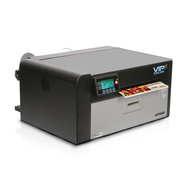How to Print Custom Wine Labels: Tips and Techniques
26th Aug 2025
Key Highlights
-
Use high-gloss paper or waterproof synthetics, such as polypropylene or polyester, for durability and a professional finish.
-
Use permanent, cold-temp adhesive to prevent peeling on chilled bottles.
-
Utilize high-resolution colour label printers, such as the VIPColor VP550 or Afinia L801, for vibrant, smudge-resistant labels.
-
Use professional software: BarTender is the top choice for designing wine labels, offering complete control over templates and shapes.
-
Pre-cut labels are budget-friendly; custom-cut labels offer premium branding.
-
Apply labels to actual bottles, both at room temperature and chilled, to ensure proper adhesion and alignment.
-
Buy from reliable Canadian suppliers to ensure fast shipping, consistent quality, and local support.
-
Standard wine labels range in size from 3.5" x 4" to 4" x 6", depending on the bottle type.
-
Follow CFIA and Health Canada regulations for legal wine labelling in Canada.
Whether you're a boutique winemaker, event planner, or DIY enthusiast, knowing how to print custom wine labels can take your branding or celebration to the next level. But it’s not just about design; achieving a professional, waterproof finish that adheres to glass bottles in cold or humid environments requires the right combination of printer, label material, adhesive, and print settings.
In this guide, we’ll walk you through the essential tools, label types, and print techniques to ensure your custom wine labels look sharp, last long, and stick reliably, whether you’re producing a few dozen or scaling up for commercial use.
How to Choose the Right Materials and Tools for Custom Wine Labels?
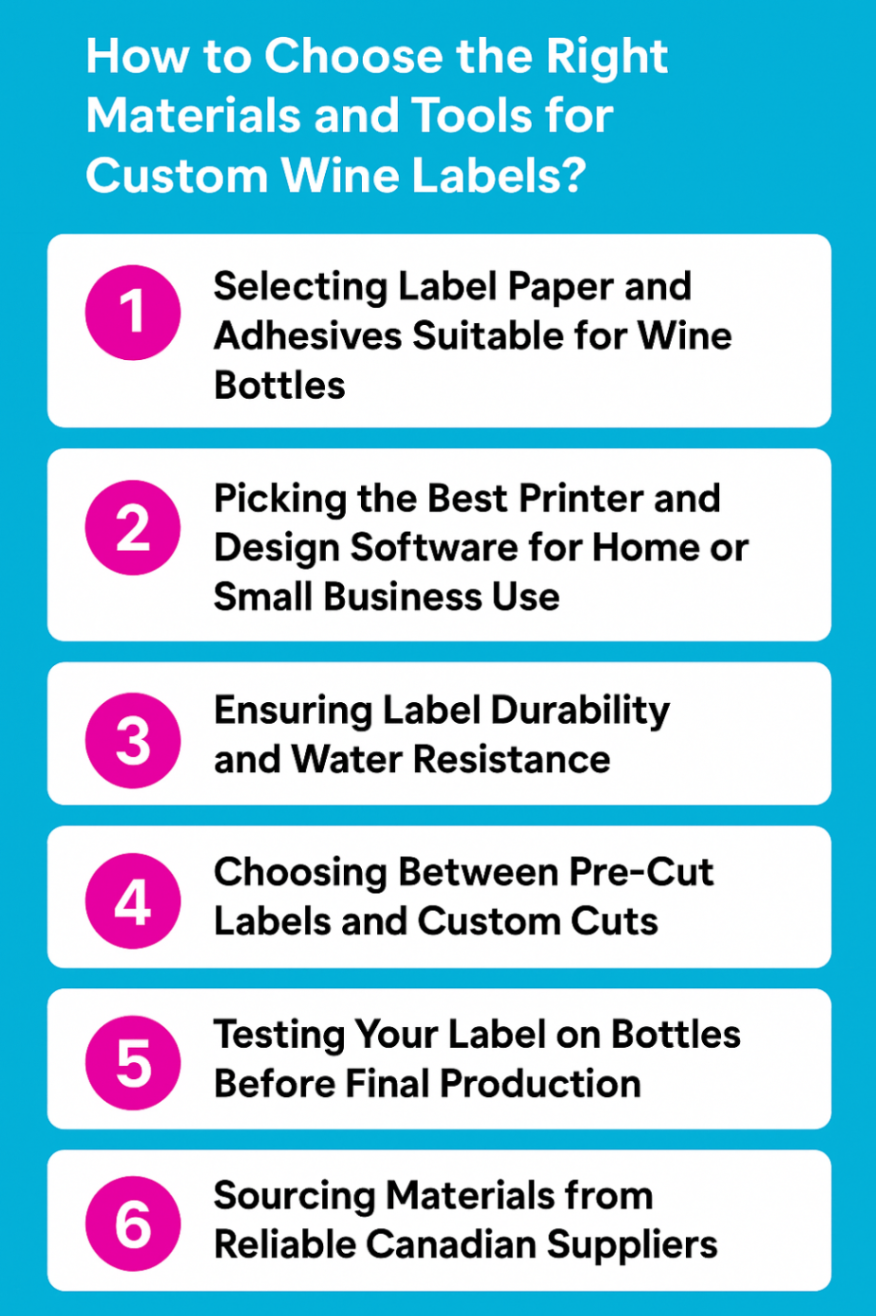
Creating professional-quality wine bottle labels at home or for small-batch commercial use starts with selecting the right materials and tools. Whether you're designing custom labels for a special event, a boutique vineyard, or personal gifting, the durability, adhesive strength, and visual appeal of your labels depend heavily on the materials and equipment you choose.
1. Selecting Label Paper and Adhesives Suitable for Wine Bottles
The foundation of any great custom wine label is the label material itself. Since most wine labels are printed using colour label printers, inkjet-compatible high gloss paper labels are commonly used for their vibrant finish and cost-effectiveness.
However, for added moisture resistance, especially when bottles are stored at room temperature, chilled, or placed in ice buckets, synthetic labels like glossy polypropylene, glossy white polyester, and glossy silver polyester are the best choice.
Pairing the label face stock with the right adhesive is critical. Choose a permanent, cold-temperature adhesive that adheres well to glass surfaces, especially when condensation is likely. This ensures your wine labels won’t peel or wrinkle when exposed to refrigeration, humidity, or handling during shipping.
2. Picking the Best Printer and Design Software for Home or Small Business Use
To print professional-grade custom labels, use a high-resolution colour inkjet printer or a pigment-based label printer designed for roll or sheet printing. Models that support roll labels enable higher output and reduced waste, particularly when printing large volumes or multiple designs for various types of wine.
For label design, BarTender software is widely recognized as the industry standard. It offers powerful layout tools, barcode support, and full integration with your label printer. You can start with a template, include your brand name, select a variety of shapes (such as rectangular, oval, or custom contours), and preview your label in real-time.
While some prefer a simple online design tool for one-off labels, serious creators benefit from full-featured software like BarTender, which offers better control over margins, bleed zones, and label dimensions.
3. Ensuring Label Durability and Water Resistance
A wine label isn’t just a sticker; it’s part of your product’s identity. So durability matters. If you’re printing your own wine labels for commercial use or events, go beyond standard paper stock. Choose waterproof synthetic labels such as polyester or polypropylene, which are designed to resist tearing, fading, and moisture exposure.
Using pigment-based inks instead of dye-based ones can also improve water resistance, especially when paired with matte synthetic surfaces. For added protection, you can laminate the labels; however, with high-gloss synthetics, lamination is often not necessary.
4. Choosing Between Pre-Cut Labels and Custom Cuts
When it comes to shape, standard pre-cut labels (such as 4” x 3” rectangles or 3” oval shapes) are the most economical option and easy to work with. They’re widely available through suppliers like Avery or DuraFastLabel.ca, and work well with templates in label design software.
However, if you want your custom labels to stand out, perhaps in a non-traditional shape that follows the bottle's contour or fits a unique brand identity, then custom shapes are worth considering. While more expensive, custom die-cut labels offer premium appeal.
At DuraFast, you can order custom-cut labels to match your branding needs without sacrificing print quality or adhesive performance.
5. Testing Your Label on Bottles Before Final Production
Before printing in bulk, always test your wine bottle labels on actual bottles to ensure accuracy. Apply them to chilled and room-temperature bottles to evaluate adhesion, positioning, and appearance under various lighting conditions. Testing allows you to adjust margins, material type, or label size before committing to full runs.
Don’t forget to test the labelling process itself. Ensure that the hand or machine application doesn’t cause bubbling, tearing, or slippage, which are common issues when materials aren’t correctly matched to the surface or temperature.
6. Sourcing Materials from Reliable Canadian Suppliers
Finally, sourcing from a reputable Canadian label printing supplier ensures faster delivery, reliable material quality, and local support. DuraFastLabel.ca offers an extensive selection of roll labels, custom shapes, pre-cut sizes, and printable materials suited explicitly for wine bottle labels. Whether you're printing 50 or 5,000, sourcing locally helps you avoid customs delays and receive help when you need it.
Best Software for Creating Wine Labels: BarTender
For professional, compliant, and beautifully designed wine bottle labels, BarTender is the gold standard. Whether you're printing for a small batch or full-scale production, it lets you design, preview, and print custom labels with barcodes, logos, and variable data, fast.
-
Drag-and-drop design
-
Supports barcodes, QR codes, and variable data
-
Works with all major label printers and templates
-
Ideal for both pre-cut and custom shapes
Try it free for 30 days:
Download BarTender Trial →
Recommended Licenses
-
BarTender Starter (Unlimited Printers) – $289 CAD/year
Perfect for entry-level labelling with barcodes and static data. -
BarTender Professional (Unlimited Printers)
Ideal for advanced layouts, data integration, and automation.
How to Select the Best Printing Equipment for Professional Wine Labels?
Whether you’re producing custom labels for a small vineyard or launching a new product line, investing in the right label printing equipment ensures vibrant colours, durable finishes, and consistent output across a variety of shapes and materials. Below are six top-rated printers for producing professional wine labels at home or in a small business setting.
1. VIPColour VP550 Memjet Colour Label Printer
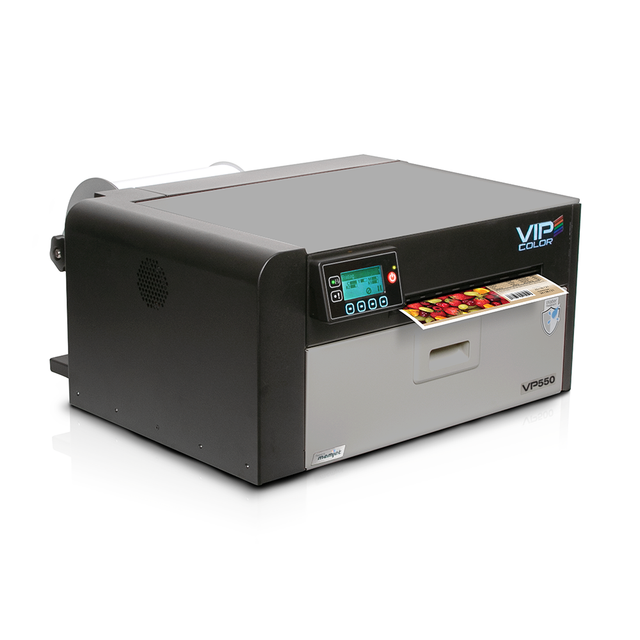
The VIPColour VP550 is a Memjet dye ink-based colour inkjet label printer designed for producing water- and smudge-resistant labels. It's a strong choice for wineries that require vibrant, long-lasting roll labels with minimal ink bleed.
Pros:
-
Uses dye inks for superior water and fade resistance
-
High-speed printing (up to 8 ips)
-
1600 dpi print resolution
-
Excellent for glossy paper and synthetic materials like polypropylene
-
Compact and easy to maintain
Cons:
-
Can not print GHS BS5609 compliant labels
Best for: Wine producers needing water-resistant, smudge-proof labels in high volumes.
2. Afinia L502 Colour Label Printer
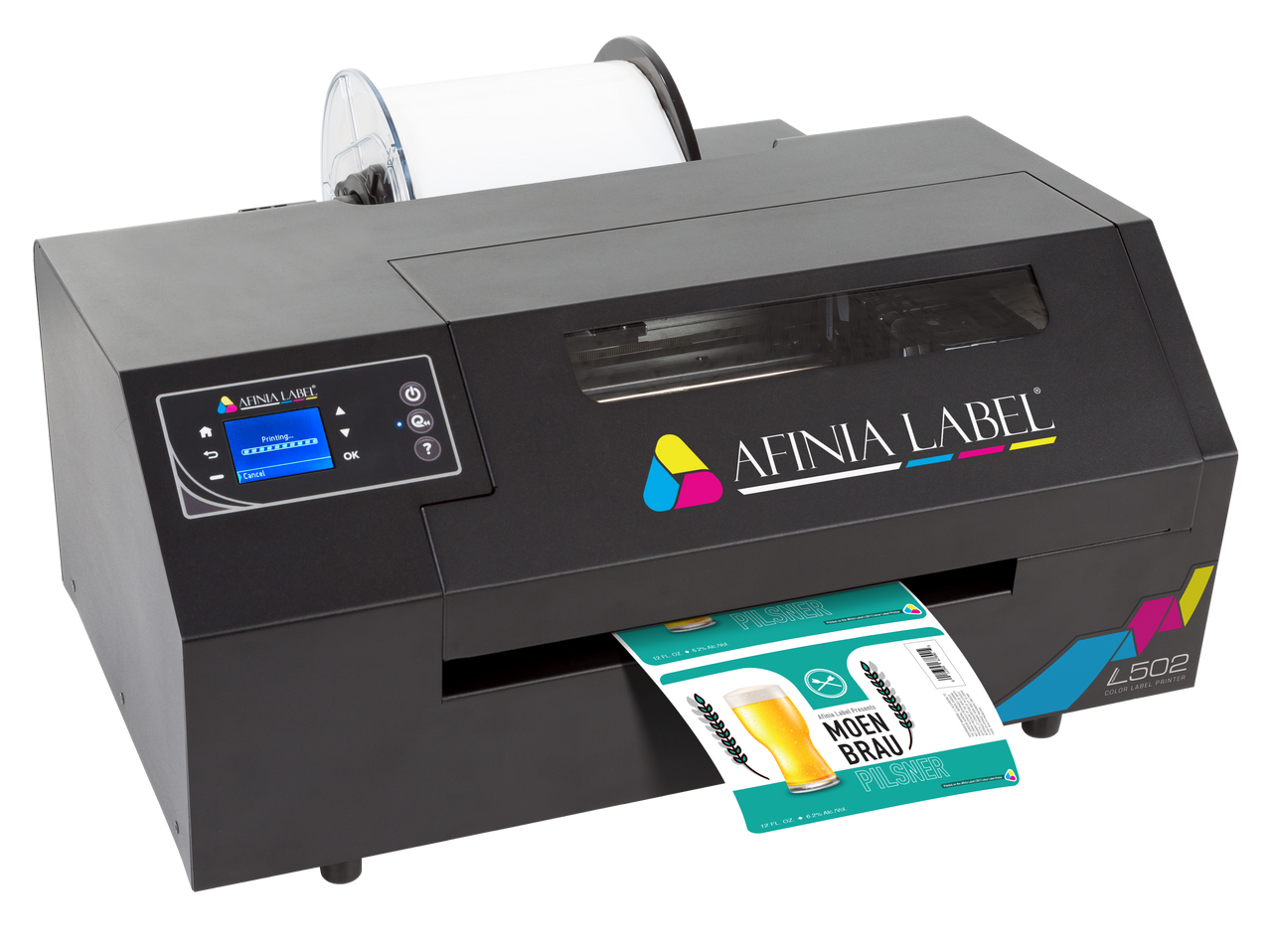
The Afinia L502 is a dual-ink capable printer that supports both dye-based and pigment-based cartridges, giving users the flexibility to prioritize vibrant colour or durability based on their label type.
Pros:
-
Interchangeable dye and pigment ink capability
-
Supports a wide range of media, including high gloss and waterproof synthetics
-
Rugged metal construction suited for small-scale industrial environments
Cons:
-
Slightly slower print speeds (up to 5 ips) compared to other models
-
Swapping ink types requires flushing the printhead
Best for: Small wineries seeking flexibility in label finishes and durability, from premium, shelf-ready designs to waterproof back labels.
3. Afinia L801 Colour Label Printer
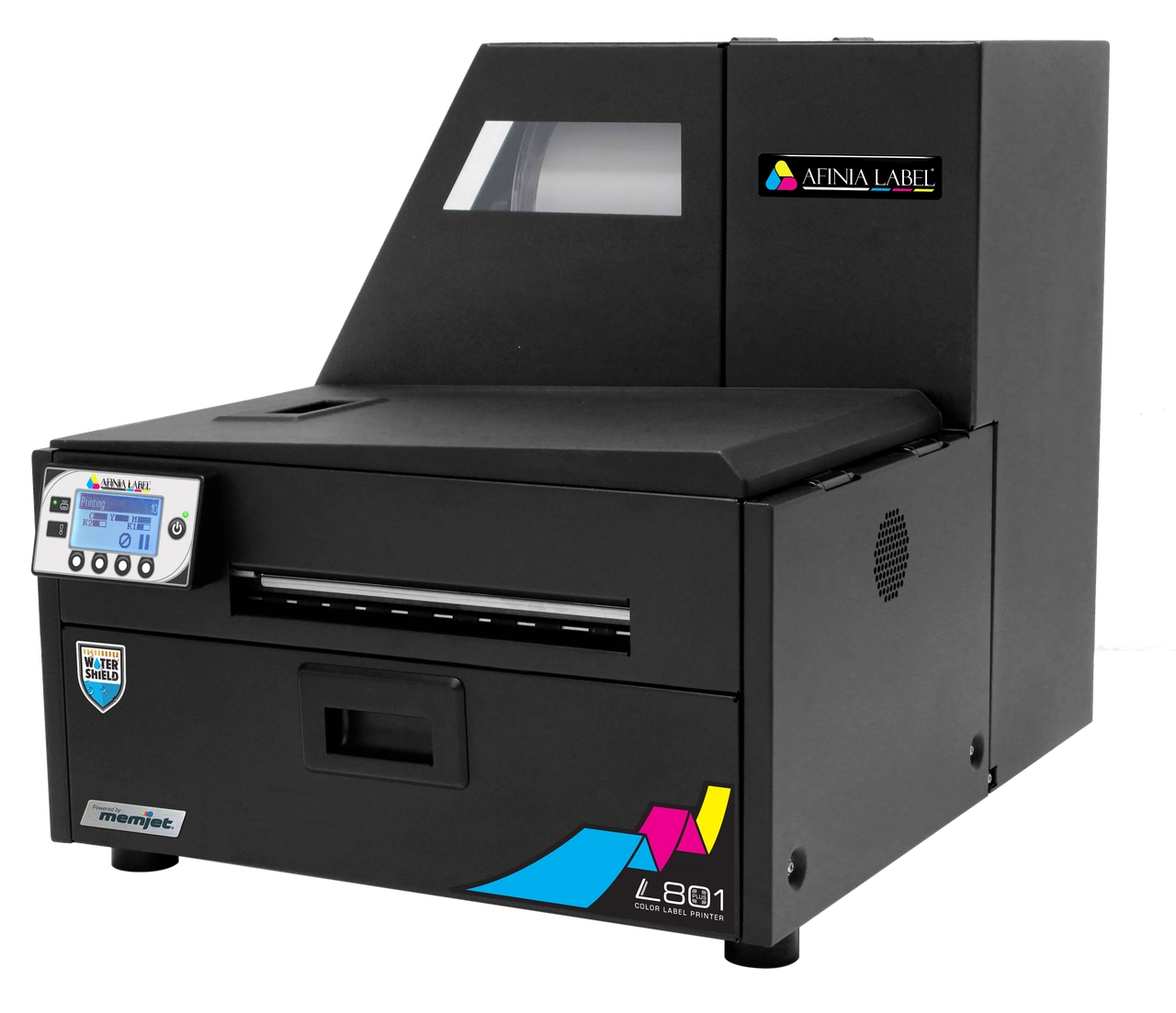
The Afinia L801 is a high-speed Memjet-powered printer that delivers outstanding full-colour quality, making it ideal for detailed artwork, logos, and different designs across label types.
Pros:
-
Stunning 1600 dpi resolution for sharp imagery and text
-
High print speeds up to 12 ips
-
1600 dpi print resolution
-
Low cost per label for medium to high-volume users
Cons:
-
Dye-based ink only, not ideal for GHS BS5609 chemical compliant labels
-
Requires precise label handling to avoid media jams
Best for: Winemakers producing high-impact, full-colour front labels in bulk for retail or export.
4. Primera LX4000 Color Label Printer
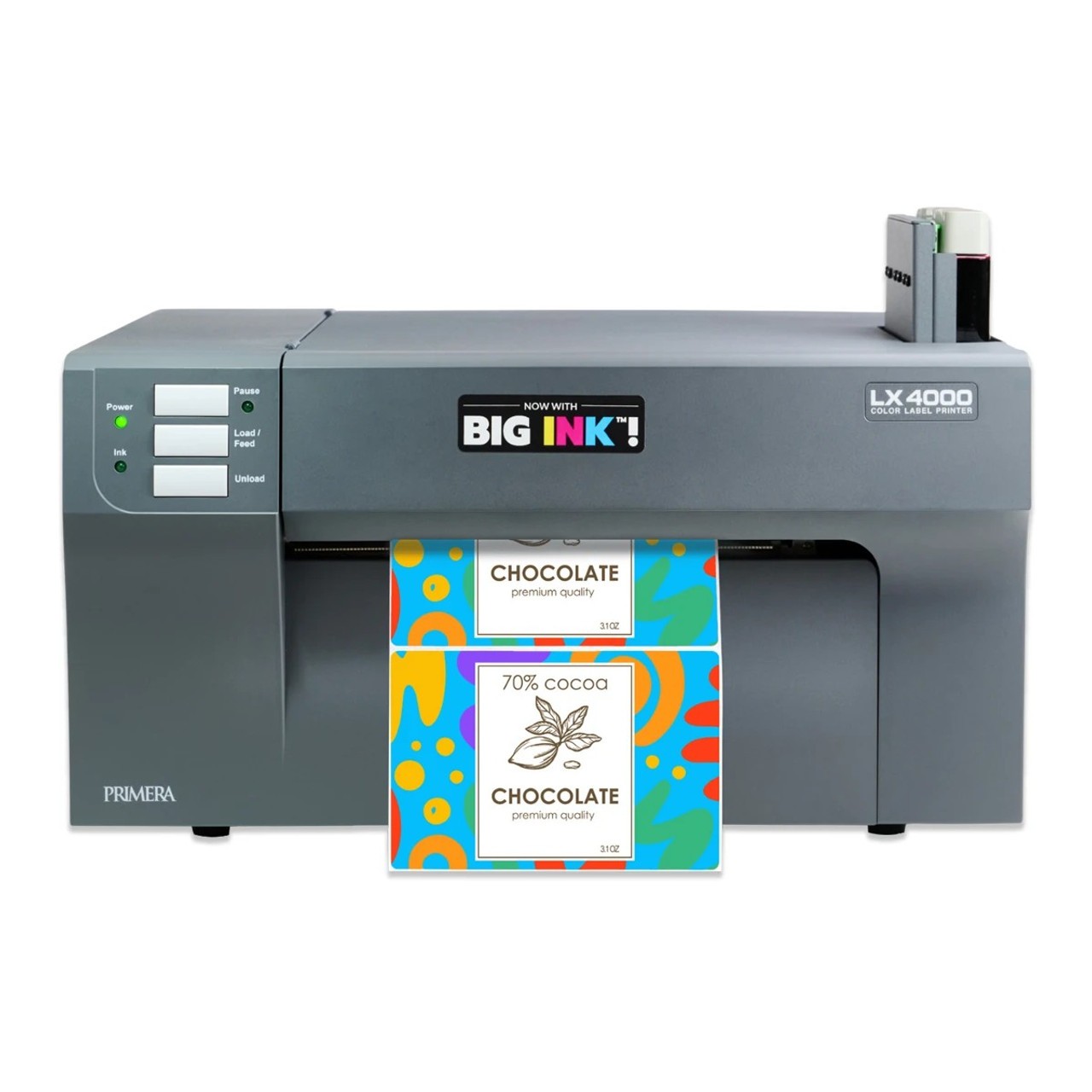
The Primera LX4000 is designed for businesses that require premium print quality and need to print on wider labels. It uses Big Ink™ tanks for lower operating costs and reduced ink replacement frequency.
Pros:
-
Uses pigment-based inks for moisture and UV resistance or dye inks also available
-
Supports large, full-width label designs up to 8.25"
-
Perfect for wide-format bottle labelling (e.g., 1.5L wine bottles)
-
4800 dpi print resolution
Cons:
-
Higher upfront cost than entry-level models
-
Slower output if printing highly detailed labels at max resolution
-
Uses CMY (Cyan, Magenta, Yellow) inks to produce blank at increased inks cost
Best for: Craft wineries and businesses printing oversized or wraparound labels with long-lasting print durability.
5. Toshiba Tec BX410T 203 dpi - 14 ips Near Edge Industrial Thermal Transfer Label Printer
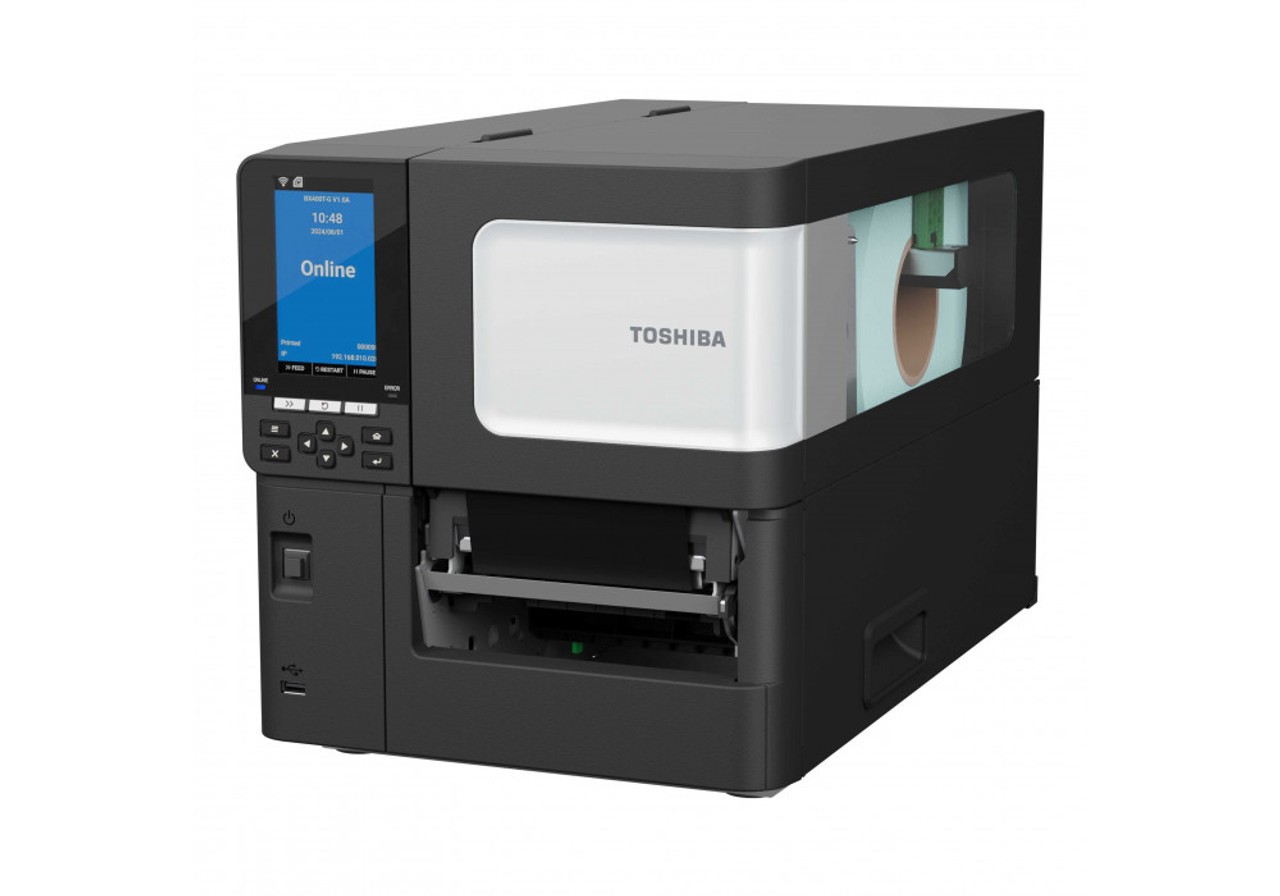
The Toshiba BX410T is an industrial thermal transfer printer that utilizes near-edge print technology, enabling printing on a wide range of synthetic materials, including metallic and specialty stocks, for custom wine labels.
Pros:
-
High-speed output (up to 14 ips)
-
Excellent for foil, clear, or synthetic materials with wax/resin or resin ribbons
-
Built to handle long production runs with minimal maintenance
Cons:
-
Limited to black or single-colour ribbon printing, not full-colour
-
Not ideal for decorative or front-facing retail labels
Best for: Back labels, compliance labelling, barcodes, and lot numbers on wine bottles needing thermal durability.
6. Citizen CL-S703III-EPUL-P Industrial Label Printer
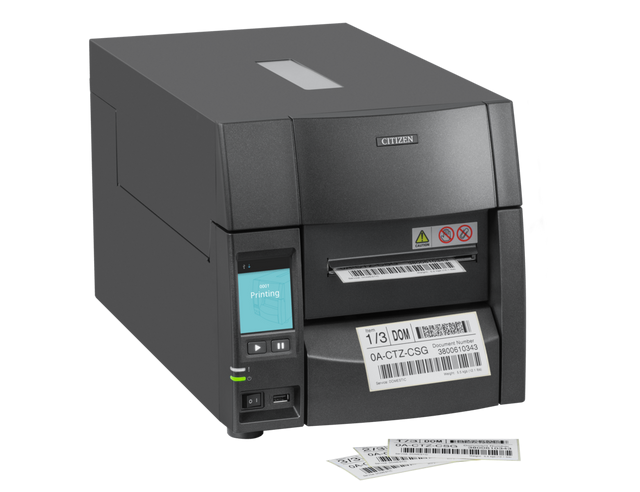
This industrial-grade printer from Citizen CL-S703III offers sharp 300 dpi resolution and a fast print engine, making it suitable for wineries that need consistent print quality for labelling bottles of wine in high-throughput environments.
Pros:
-
High-resolution output for small fonts and precise graphics
-
Durable metal housing suited for rugged environments
-
Supports a variety of materials and label sizes
Cons:
-
Thermal transfer only; not suitable for full-colour branding labels
-
Requires ribbon and media alignment for best results
Best for: Warehousing and logistics labelling, compliance, and auxiliary wine label applications (e.g., QR codes, lot tracking).
Why Professionals Choose DuraFastLabel.ca for Wine Label Printing
When precision, quality, and reliability matter, serious creators turn to DuraFastLabel.ca. Whether you're labelling a vintage Merlot, a sparkling rosé, or a one-of-a-kind event bottle, we provide everything you need to create stunning, durable, and compliant wine labels, all in one place.
At DuraFast, we don’t just sell printers and labels; we deliver complete labelling solutions backed by technical expertise and Canadian-based support. From high-gloss paper to synthetic waterproof materials, from pigment ink colour printers to custom-cut roll labels, we offer the tools professionals trust to bring their brand vision to life.
-
Complete Solutions: Printers, labels, software, and inks, all tested for compatibility and performance.
-
Fast Canadian Shipping: No border delays, no hidden duties, just quick delivery across Canada.
-
Expert Support: Our trained team helps you choose the right printer, media, and design tools, before and after your purchase.
-
Top Brands: Zebra, Epson, Afinia, Primera, Toshiba, Citizen, and more, all in one trusted shop.
Whether you’re printing 50 bottles or 5,000, DuraFastLabel.ca helps you scale without compromising quality.
Ready to take your wine label production to the next level?
Explore our full range of professional label printers and supplies today at DuraFastLabel.ca, and get the performance your business deserves.
Conclusion
Creating professional custom wine labels requires more than just a great design; it involves selecting the right materials, adhesives, printers, and ensuring proper preparation. Whether you're producing small batches for events or commercial quantities, using waterproof synthetics, high-resolution colour printers, and reliable adhesives ensures your wine bottle labels stay sharp, durable, and compliant. With the right tools and testing process, you can confidently print labels that elevate your product and reflect your brand's identity on every bottle of wine.
Frequently Asked Questions:
Can I print waterproof wine labels at home?
Yes, you can print waterproof wine labels at home using a high-resolution inkjet or laser printer with waterproof label stock. For optimal results, use weatherproof vinyl or polyester labels in combination with pigment-based inks. Laminating the labels adds extra protection against moisture, especially for chilled or outdoor-stored bottles.
What is the best size for a standard wine label?
The standard wine label size typically ranges from 3" x 4" to 4" x 6", depending on the bottle’s shape and branding design. For 750ml bottles, the standard front label size is 3" wide by 4" tall, with rear labels slightly smaller to accommodate compliance, ingredients, or promotional content.
How do I ensure my wine labels stick properly in Canadian climates?
Select cold-temperature adhesives specifically designed for use with wine bottles, especially if the bottles are stored in coolers or outdoors. Labels made from waterproof vinyl or polyester with permanent adhesive ensure durability in humidity, condensation, and fluctuating Canadian temperatures. Apply labels to clean, dry bottles for the best adhesion performance.
Are there legal requirements for custom wine labels in Canada?
Yes, wine labels in Canada must comply with regulations from the Canadian Food Inspection Agency (CFIA) and Health Canada. Required elements include alcohol content, volume, allergen declarations (like sulphites), bilingual labelling, and country of origin. Commercial labels must also include the producer’s name and be compliant with provincial liquor board standards.
